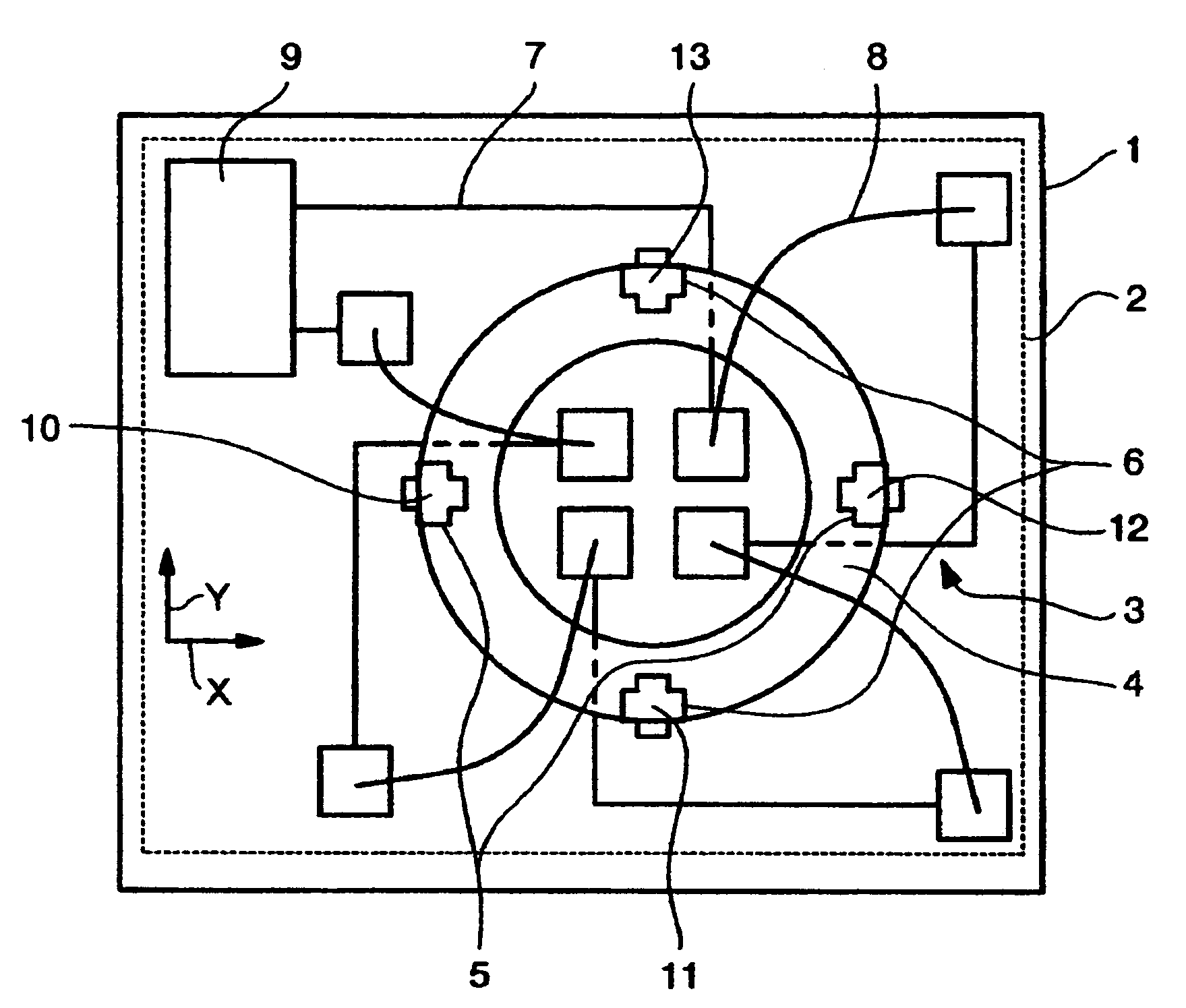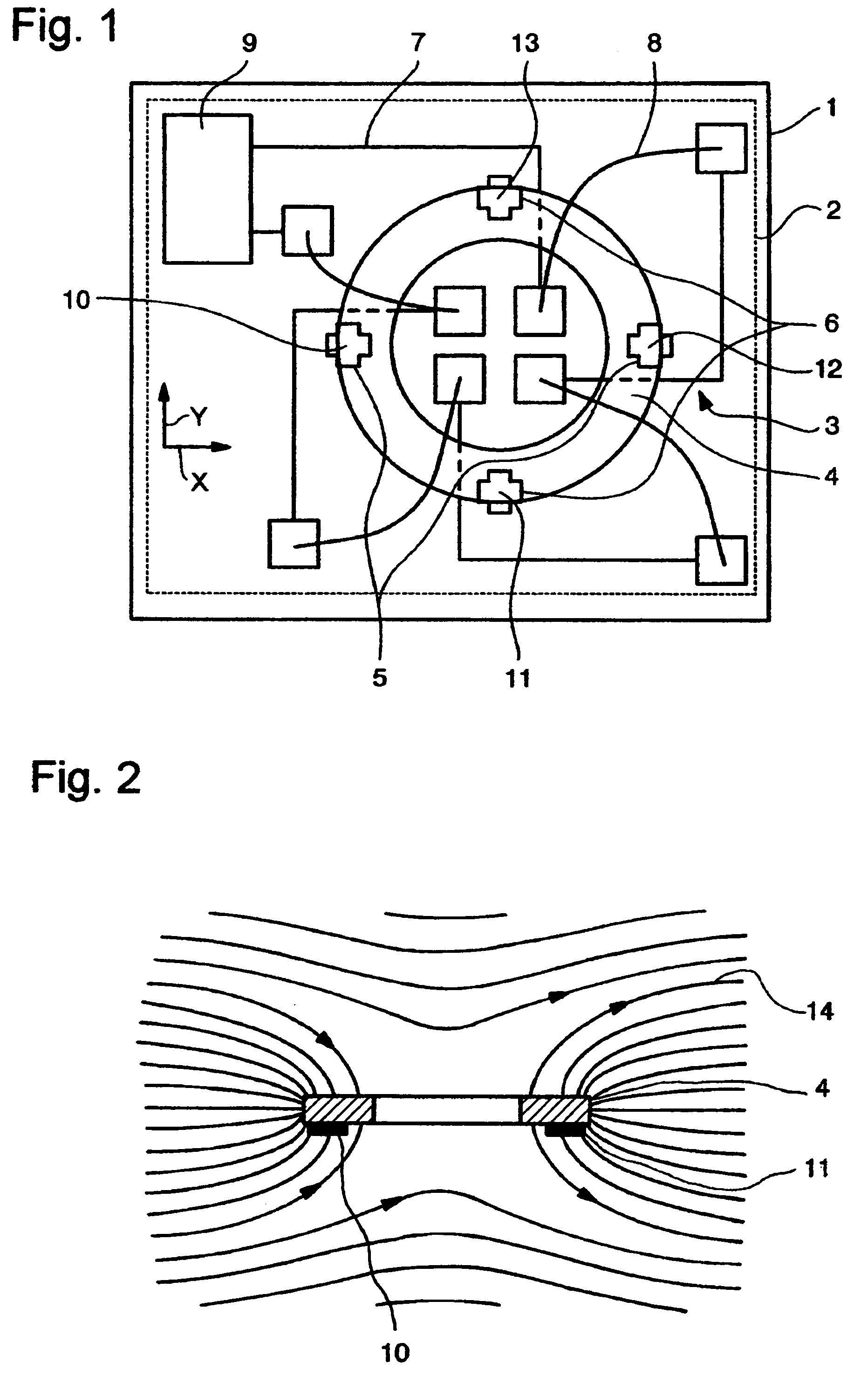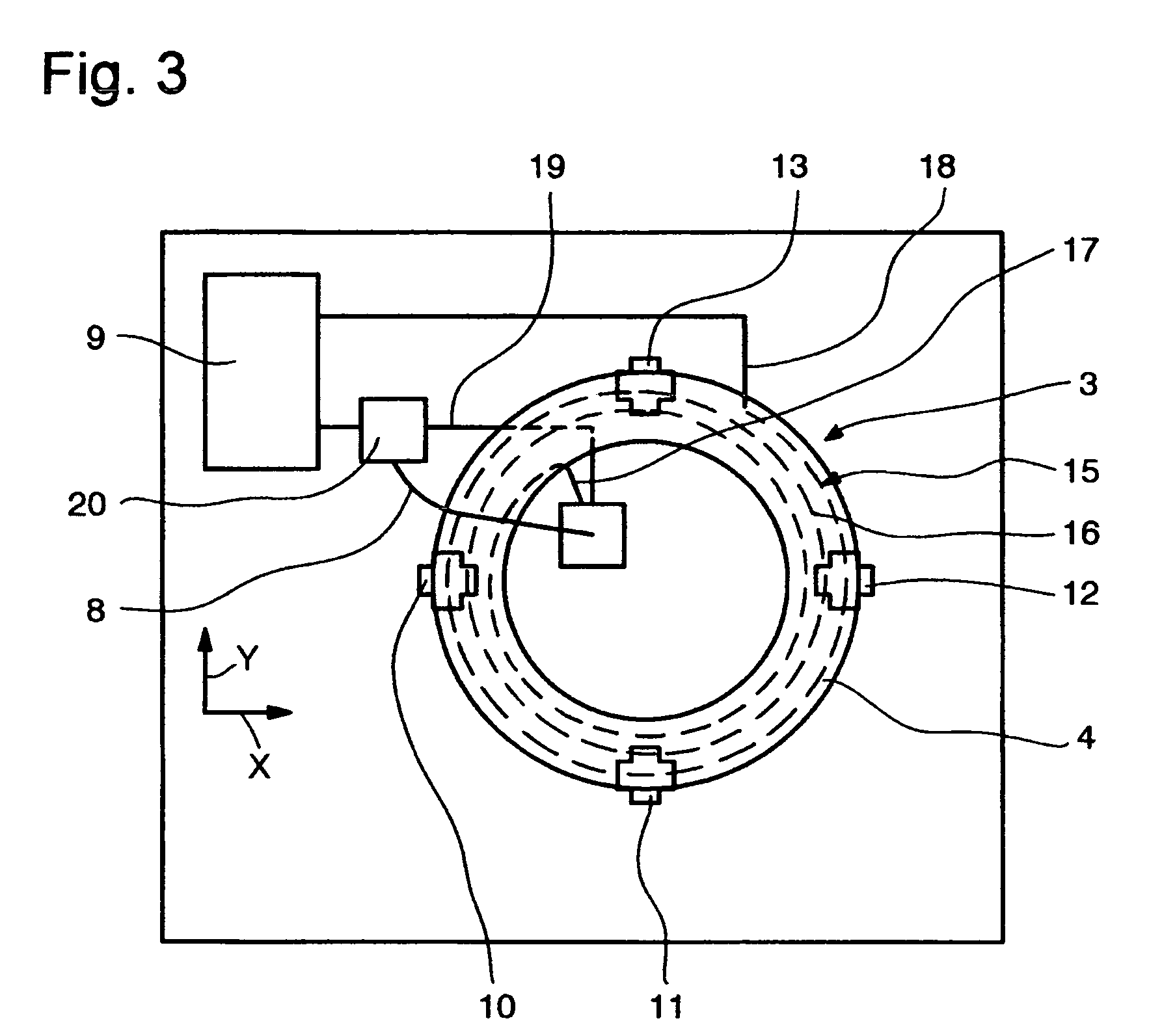Magnetic field sensor and method for operating the magnetic field sensor
a magnetic field sensor and magnetic field technology, applied in the field of magnetic field sensors, can solve the problems of not being suitable for battery operation applications, relative high current is needed for magnetic saturation, etc., and achieve the effect of reducing the volume of the core, shortening the current pulse for magnetization, and reducing the total required energy
- Summary
- Abstract
- Description
- Claims
- Application Information
AI Technical Summary
Benefits of technology
Problems solved by technology
Method used
Image
Examples
embodiment 1
[0021]FIG. 1 shows a plan view of a magnetic field sensor formed as a semiconductor chip 1 for the measurement of two components of an external magnetic field. A Cartesian system of x, y, z co-ordinates serves as reference system the origin of which in the figure, for reasons of illustrative clarity, is arranged outside the magnetic field sensor, whereby the z direction runs vertically to the plane of projection. The magnetic field sensor comprises an electronic circuit 2, an excitation coil 3 to which current can be applied with, for example, four turns, a ring-shaped ferromagnetic core 4 and two read-out sensors 5, 6. The ferromagnetic core 4 extends in a plane and therefore defines the position of the xy plane. The read-out sensor 5 serves the acquisition of the x component of the magnetic field, the read-out sensor 6 serves the acquisition of the y component of the magnetic field. The read-out sensors 5, 6 consist preferably of two locally separated but electrically connected se...
embodiment 2
[0033]FIG. 3 shows a plan view of a further magnetic field sensor with a ring-shaped ferromagnetic core 4 with which the excitation coil 3 is formed as a flat coil 15 with a spiral conductor path 16 that is arranged underneath the ferromagnetic core 4. The conductor path 16 runs spirally but nevertheless almost concentrically to the ferromagnetic core 4.
[0034]A first end 17 of the conductor path 16 is naturally located within, a second end 18 of the conductor path16 outside the ring-shaped ferromagnetic core 4. A conductor path 19 arranged in a second metallisation layer connects the first end 17 with a connection 20 arranged outside the ring-shaped ferromagnetic core 4. (The bond wire 8 also illustrated is not present for the second embodiment but is important for the third embodiment.) The conductor path 19 is therefore located on the same side of the ferromagnetic core 4 as the flat coil 15. Although the conductor path 16 of the flat coil 15 runs spirally, parts of the conductor ...
embodiment 3
[0035]This example largely corresponds to the second embodiment but instead of the conductor path 19, the bond wire 8 is present that connects the first end 17 of the flat coil 15 with a connection 20 arranged outside the ring-shaped ferromagnetic core 4. Because the flat coil 15 and the bond wire 8 cross the ferromagnetic core 4 on different sides, namely the flat coil 15 underneath and the bond wire 8 above, the result is a supplementary coil with one single winding that encloses the ring of the ferromagnetic core 4 and works as an excitation coil in accordance with the first embodiment. In contrast to the second embodiment, the current flowing through the bond wire 8 does not compensate the current flowing in radial direction through the flat coil 15. The combination of flat coil 15 and bond wire 8 represents an excitation coil 3 with which the ferromagnetic core 4 can be brought into a state of predetermined magnetization in a very efficient way in which the magnetization of the...
PUM
 Login to View More
Login to View More Abstract
Description
Claims
Application Information
 Login to View More
Login to View More - R&D
- Intellectual Property
- Life Sciences
- Materials
- Tech Scout
- Unparalleled Data Quality
- Higher Quality Content
- 60% Fewer Hallucinations
Browse by: Latest US Patents, China's latest patents, Technical Efficacy Thesaurus, Application Domain, Technology Topic, Popular Technical Reports.
© 2025 PatSnap. All rights reserved.Legal|Privacy policy|Modern Slavery Act Transparency Statement|Sitemap|About US| Contact US: help@patsnap.com



